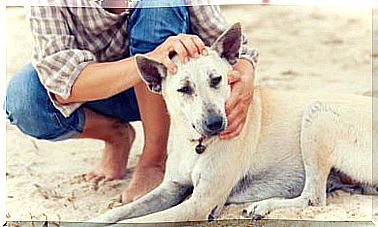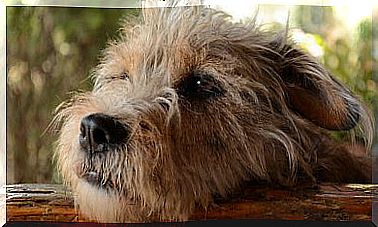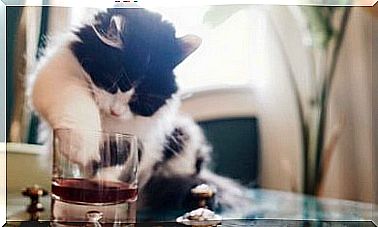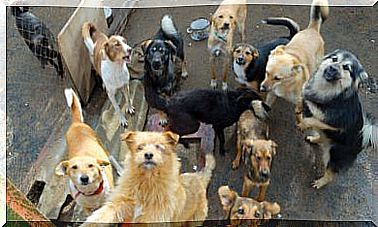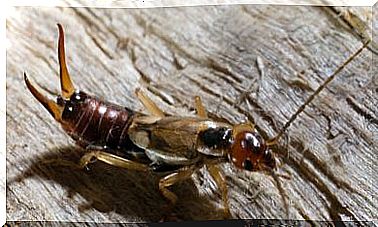4 Guinea Pig Skin Care
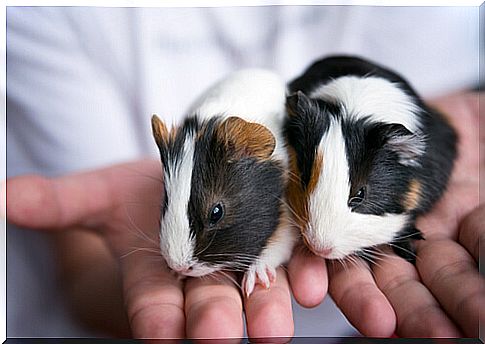
The guinea pig, also known as guinea pig or guinea pig, is native to the Andean countries. This medium-sized animal has become a very popular pet in Europe. Therefore, it causes curiosity from its origin to the care that guinea pig skin requires.
The guinea pig or Cavia porcellus
The scientific name of this species is Cavia porcellus. Its etymology comes from Caviá which, in turn, derives from the indigenous language of Brazil, sawiya / sabúia , whose meaning is ‘rat family’.
On the other hand, ‘ porcellus ‘ comes from the Latin porcus (pig) and ellus, diminutive that responds to ‘little pig’. Refers to its small and plump size.
This species of rodent mammal comes from South America, particularly from the Andes Mountains of Colombia, Ecuador, Peru, and Bolivia. It has developed an important relationship with the pre-Inca people, since it was a source of food with a high protein level. In addition, it appears in different traditions that reach the present day.
This diurnal, terrestrial and gregarious mammal arrived on the Iberian Peninsula approximately 400 years ago. The life expectancy of this medium-sized species is four to five years.
Guinea pigs have different shades and sizes of fur. Guinea pig hair has been shown to have characteristics very similar to human hair. For this reason, it is used as an experimental animal to test dyes and other hair products by pharmaceutical companies.
Another curious fact about these animals is that there are associations throughout the world that carry out exhibitions. Each club can create its own regulations for competitions.
Guinea pig skin care
Guinea pigs have different hair lengths, so care varies slightly depending on the type of guinea pig. Specifically, the species C. porcellus is subdivided into the short-haired guinea pig, the long-haired guinea pig or the hairless guinea pig. The different cares that can be followed to care for guinea pig skin are shown below.
Regular brushing
Short-haired guinea pigs need a brush that doesn’t have to be large: a new toothbrush may do the trick. They have special glands on the back, which generate an oily substance; to remove it, it can be cleaned with water and a degreaser preparation.
Brushing allows you to remove any loose hair that can be swallowed. In this way, future problems are avoided, since these animals are not able to expel them.
With regard to long-haired guinea pigs, their coat requires extra care. It must be brushed regularly, with hard brushes or combs to be able to remove everything from food debris to dead fur.
Brushing has to be done from the middle of the body towards the head area. Likewise, you also have to brush from the middle of the body towards the rear.
With respect to the variety of hairless guinea pig, this animal will not require brushing. Its name is due to the presence of hair only on the muzzle and legs.
It is not advisable to bathe them
Guinea pigs are fairly clean animals, who take care of their personal hygiene. For this reason, it is not necessary or advisable to bathe the guinea pig. In the event that it had to be washed for whatever reason, the following must be taken into account:
- The container must contain lukewarm water in a small quantity.
- Carefully soak the guinea pig in the water.
- Gently scrub the fur with a mild pet-recommended shampoo. Always avoid delicate areas, such as the eyes.
- Rinse with plenty of lukewarm water.
- Finally, pat the guinea pig dry with a warm towel. Make sure their skin has completely dried.

In the case of the hairless guinea pig, you can soak a cloth in warm water and bathe it gently. Care must be taken to keep the animal at a specific ambient temperature, between 20 and 22 ºC.
Parasites
Guinea pigs are very sensitive animals that can be attacked by parasites such as mites or lice. Among the most common symptoms caused by these parasites is peeling, alopecia or scabs.
To avoid this, it is recommended to check the skin of the guinea pig and strange behaviors such as compulsive scratching or rubbing against objects. It is also possible that they suffer from pests. Therefore, it is recommended to make a visit to the vet every half year.
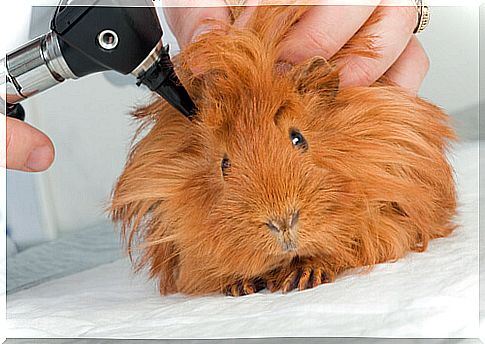
Cut the nails
Free-living guinea pigs wear down their claws when digging and walking on the ground. Domestic guinea pigs do not use their nails, so it is necessary to cut them with a special nail clipper to avoid problems for the animal.
Thus, the nails are prevented from bending or malformations occur, which would cause pain in the animal. Therefore, it is recommended to cut your nails once a month.
This small animal has a very varied coat and is very relevant in the culture of the countries of South America. Therefore, it is always appropriate to expand knowledge, including the care that guinea pig skin requires.
